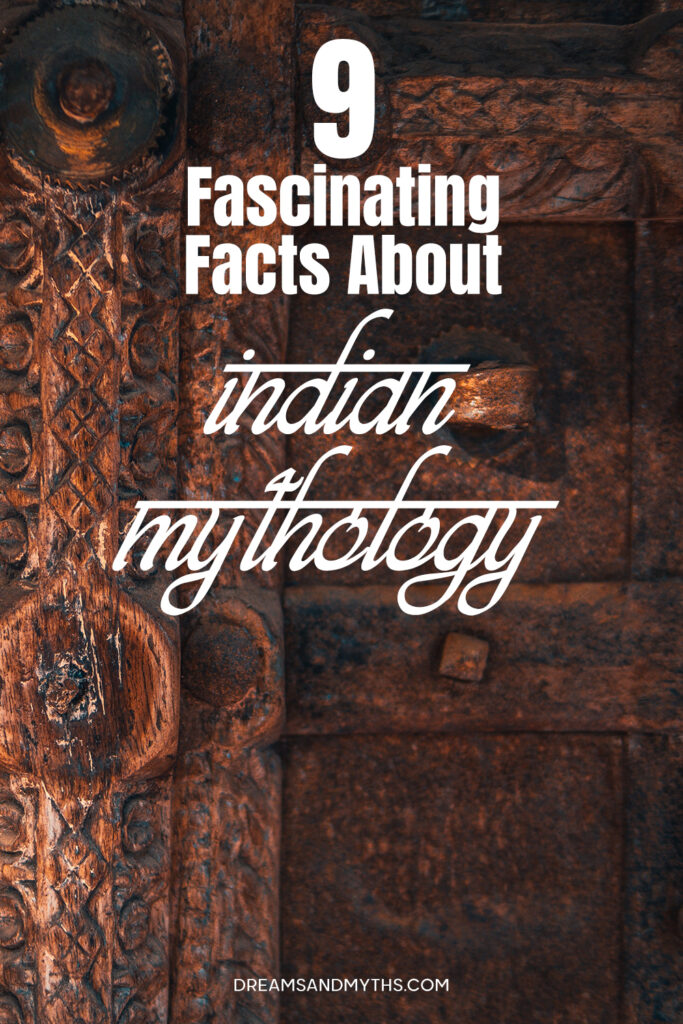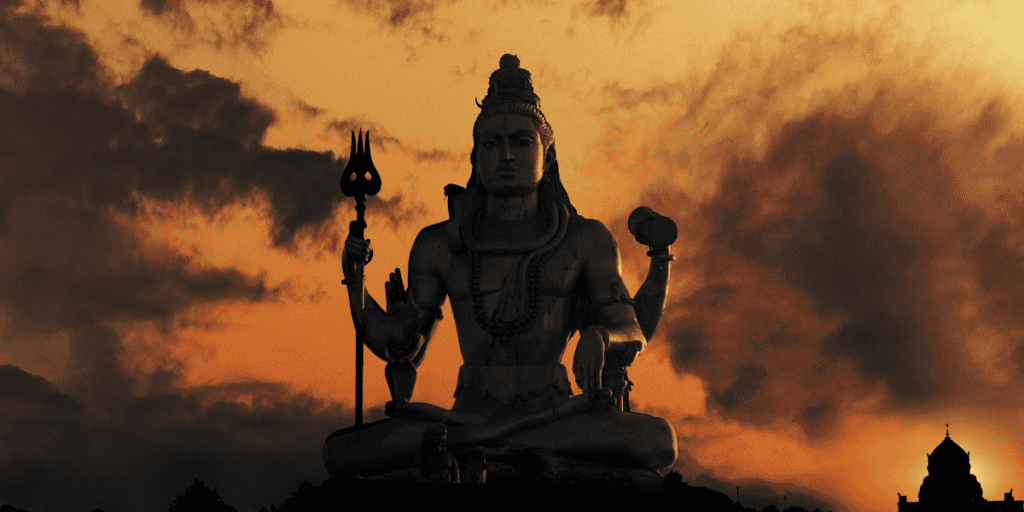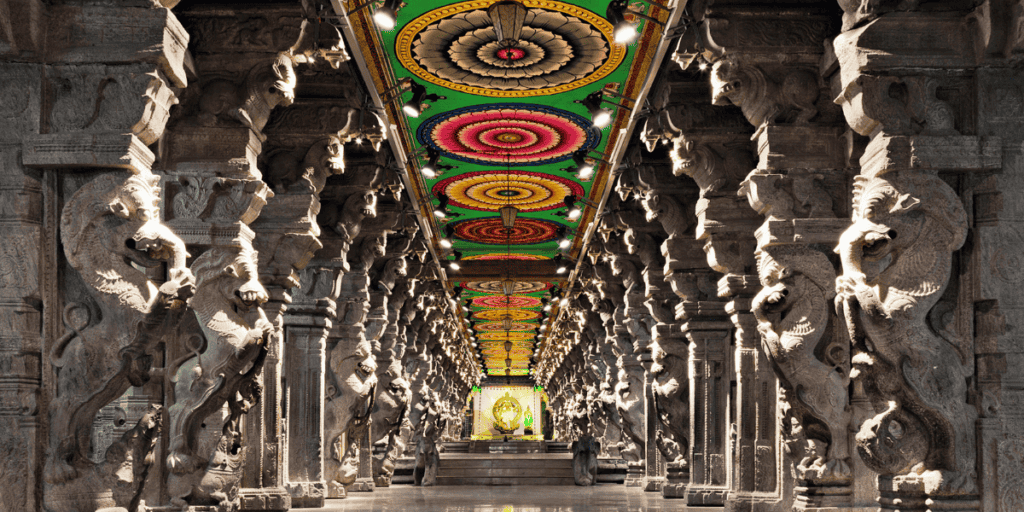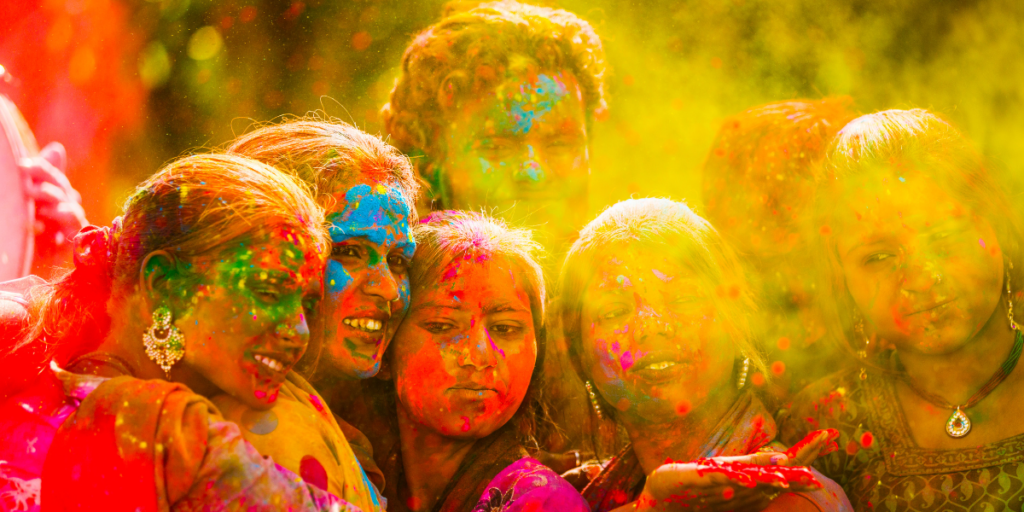Hinduism is one of the most complex and oldest religions in the world. You can easily find traces of Hindu beliefs and symbols all over India, including the temples and sculptures, the daily practices of Hindus, and the Hindu festivals celebrated across the country.
In this article, we have described the nine most remarkable characteristics of Hindu mythology. Each of them will enhance your knowledge of the social and cultural heritage of the Hindu civilizations during ancient times.
Fascinating Facts About Indian Mythology

1. History and Origin of Hinduism
It is believed that Hinduism started roughly around 2300 B.C and 1500 B.C in the Indus Valley, currently situated in modern-day Pakistan. However, most Hindus believe that no one founded the religion alone. Instead, it was a fusion of numerous beliefs and philosophies. Many Hindus argue that faith had always existed from ancient times. It was more like a way of life instead of a religion.
By all accounts, Hinduism started as a culture when the Indo-Aryan people merged with the original Hindus. However, it is not clear whose influence started the religion and culture.
The Vedic period is one of the notable periods in Hinduism, during which the Vedas were composed. There are also other periods like the Epic, the Puranic, and the Classic period, during which idolatry became important- for Brahma, Vishnu, Shiva, and Devi.
The medieval period lasted from around 500 to 1500 CE. The invasion of the Arabs during the 7th century caused Hinduism to take a huge blow, and most Hindus became victims of conversion.
2. Gods and Deities
There are too many Gods and deities in Hinduism, and even Hindus are not sure of the exact number. The reason for so many deities is to personify different aspects of one true God to worship different Gods according to their family, regional traditions, and practices.
We will be describing some of the powerful Hindu Gods below:
Brahman, the Supreme Being
In Hinduism, we get to know about one supreme being called Brahman, who might not be known by many due to India’s cultural and linguistic diversity, as this supreme being has been seen and named in many different ways.
The God Brahman does not have a form and is known as the Paramatma (the Divine Soul), in which the three forms of the Almighty are Brahma, Vishnu, and Shiva.
To Hindus, God lives inside each person’s soul, and the person has to discover God in his way. So, the ultimate goal is to know God through one’s soul.
Hinduism is popularly known as a “polytheistic religion”(following many Gods), but this is incorrect. It is better to refer to Hinduism as being both monotheistic (following one God) and henotheistic (worshipping one God but not denying the existence of others).
Shiva

Shiva is an integral part of the Trimurti along with Brahma and Vishnu. He is known as “The Destroyer” and has been depicted as both being benevolent and malevolent. When depicted as generous, he is a mystic who leads an ascetic life on Mount Kailash. On the other hand, he is viewed as a demon slayer when he is vicious or violent.
He is considered the patron of yoga, meditation, and arts, and the main features to be noted always include the snake around his neck, the crescent moon, river Ganga flowing out of his hair, the third eye on his forehead, and the trident.
Vishnu
In the Godly trio, he is the preserver who always protects the world when in danger or under threat. His most famous avatars are Rama, the protagonist of the epic Ramayana, and Krishna, present in the Mahabharata.
He is known to have pale or dark blue skin and four arms. Moreover, he has a lotus flower in his lower left hand, a mace in his lower right hand, a conch in his upper left hand, and a chakra in his upper right hand.
In many texts, Vishnu can be seen along with his wife Lakshmi, lying down on the back of the serpent Shesha. At the same time, he dreams the universe into reality.
3. Theory of Creation
Hindu mythology has given us several possibilities as to how the universe was formed. The answers have different levels of complexities, as there were different approaches to life during previous times. The most popular approach is that the supreme Gods were oblivious to their presence and the existence of time itself. Before the creation of the universe, there was no time, heaven, or earth, or space, but only darkness.
Another approach stated that the universe was created with the enunciation of the sacred sound oom (aum), which is said to be the same sound emitted by the sun as well.
Ancient Hindu scriptures have stated that the ultimate reality (Brahman) has three main functions. These three main functions were served by the Trio of Gods: Brahma, Vishnu, and Shiva. These three gods are known as the Trimurti, where Brahma is the creator of the universe, Vishnu is the preserver of nature, and Shiva is the ultimate destroyer who brings about balance in the universe.
4. The Ages or the Yugas
The ancient rishis predicted the ages or the Yugas, and most of their stated facts have been confirmed. They have been described as follows:
The four Vedas are:
Satya Yuga: It’s also known as the age of truth and is the first and best yuga in a cycle. It is the age where truth and perfection prevail. In this yuga, people are wise, kind, and friendly. Additionally, in the Satya Yuga, humans are long-living, powerfully built, honest, youthful, vigorous, erudite, and virtuous. To top it up, all humankind can attain supreme divinity.
Also, there is no agriculture or mining since the earth makes its things. The weather is pleasant, and everyone is happy. Even better, there is no disease, fear, or evil. And the fact being, virtue reigns supremity.
Treta Yuga: The Treta yuga is the second yuga in the cycle. “Treta” means “third” and suggests that this phase has three-quarters virtue and one-quarter sins. In this age, virtue diminishes slightly. In the beginning, emperors rose to conquer the world. Wars became frequent, and there were extreme weather conditions.
Agriculture, labor, and mining come into existence slowly. The earth cannot make its things, and humans start failing to be content.
Dvapara Yuga: The Dvapara yuga is the third yuga in the cycle. “Dvapara” means “two,” and it has two-quarters virtue and two-quarters sins. In this age, virtues decrease significantly and aren’t as strong as that of our ancestors. Also, diseases start to become rampant.
Humans are not content with their belongings, and there is little peace. The Vedas are divided into four parts in this age.
Kali Yuga: It is called “Kali,” or the age of darkness and ignorance. The Kali Yuga is the last yuga of the cycle. There are one-quarter virtue and three-quarters of sins. People don’t follow dharma and lack virtue. They are barely as powerful as their earliest ancestors of Satya Yuga. In short, society lacks value, and people become dishonest.
Knowledge is lost, and scriptures are diminished. Further on, the environment is polluted, and food and water are scarce.
5. The Practical Sciences of Hindu India and Vedas
According to Hindu texts and scriptures, ancient Hindus were advanced in science and mathematics. Here is a short description of the usage of practical sciences as used in the Vedas.
The Vedas, namely the Rigveda, Samaveda, Yajurveda, and Atharvaveda, represent a collection of scientific and religious texts formulated between 1500 and 1000 BC. Sanskrit was the language used in the Vedas. Although the Vedas were composed thousands of years ago, scientists have found a strong connection between their messages and modern science.
For example, modern scientists had put forward the idea of the existence of multiverses or multi universes along the same timeline. The string theory states that we live in a multiverse, i.e., many universes exist parallelly.
The sacred texts in the Vedas and the Bhagavad Gita had a perfect understanding of the universe. The atom bomb was also inspired by the Rig Veda. There is also a mention of other nuclear weapons, airplanes, and even medicines that could bring people back from the dead.
The scientific aspect during that period was high, and we still have a long way to go to harness that knowledge.
6. Curses
Curses had an intriguing history in many different mythologies, including Hindu mythology. The Hindu Gods rarely cursed the people as they had supernatural powers that were strong enough to inflict whatever suffering they wished upon sinners. There are some instances where Gods have been shown to curse commoners.
In the epic Mahabharata, the Pandavas were guilty of killing Karna, who was their half-brother all along. As a result, Yudhisthira, the Pandavas’ eldest, cursed his mother Kunti when she failed to communicate their secret. The curse stated that no woman from then on should be able to keep a secret from others.
The most notable curse of all is when Gandhari, the mother of the Kauravas, cursed Lord Krishna at the end of the Mahabharata. After Krishna defeated the Kauravas and killed all 100 sons of Gandhari, he went to console the distraught mother. On seeing Krishna, Gandhari cursed that no one in Krishna’s bloodline would live to see future generations, and all of Krishna’s family killed each other in due course. Krishna died an untimely death with no one left to continue his bloodline.
7. The Great Epics
The Ancient Hindus wrote two of the four greatest epics, namely the Mahabharat and the Ramayana. The Mahabharata is the longest epic in the world. This Epic tells us about the enmity between the two families, the Pandavas and the Kauravas, and how it ended with the battle of Kurukshetra and the victory of the Pandavas.
The most important part of the Mahabharata is the Bhagavad Gita, one of the most sacred texts in Hinduism. The Bhagavad Gita has an abundance of wisdom about human behavior, emotions, morality, and ethics which Lord Krishna said during the battle.
The Ramayana tells us about the life of Rama, one of the avatars of Lord Vishnu, who was sent into exile with his wife Sita and brother Lakshman for 14 years. During their exile period in the forest, Sita was kidnapped by the Ravana, the king of Lanka. With the help of the monkey army led by Hanuman, Rama rescued Sita and returned to the Kingdom of Ayodhya.
Like the Mahabharata, the Ramayana doesn’t simply tell a story but presents the teachings of Hinduism. It tells us about the morals and ethics of the society and kingdom of Ayodhya.
8. Hindu Architecture

Hindu architecture is one of the most iconic points to be noted about Hindu mythology.
The science and reasons behind Hindu architecture were explained in some Hindu texts that described the formation of sculptures, temples, idols, etc.
An essential portrayal of Hindu architecture is the temples or mandir. Every temple has an inner shrine where the primary image of the deity is kept.
The structure outside the temple depicts a tower. There are also other chambers where there are additional deities, or there are prayer halls as well.
Hindu temples have been made since time immemorial, and some of them are so enthralling to think of how the ancient people made such huge and beautiful sculptures and buildings.
9. Hindu Festivals
There are many Hindu traditions in different parts of the country on any day of the year, and it is observed as a holiday. Moreover, there are many festivals in a year owing to the high number of Gods Hindus have, as it is believed that prayer to animate and inanimate objects are essential.
Many of these holidays are based on the changes of seasons (such as Pongal, in south India), celebrating the harvest (such as the Onam, in south India), and so on.
Many others are dedicated to specific Gods and Goddesses such as Ganesh Chaturthi (for Lord Ganesha), Durga Puja (for Goddess Durga), Janmashtami (the birth date of Krishna), and Mahashivratri (dedicated to Lord Shiva).
Some of them can be described below.
Holi

Holi is celebrated during the beginning of spring, and it has religious importance in Hindu mythology. During this festival, children and people throw colored powders and scented waters to celebrate the colorful spring.
During this holiday, Hindus enjoy life and disregard their social norms. Everyone is equal, and the celebration of the colors is meant to break barriers and celebrate unity and brotherhood.
Diwali
Also known as “The Festival of Lights,” Diwali is observed for five days during the starting of autumn. It is marked as the end of the harvest season, and farmers give thanks for the past year and pray for a good harvest during the following year. The most important Goddess of this holiday is Lakshmi, the Goddess of wealth and prosperity.
The name “Festival of Lights” is derived from the candles, lamps (Diya), and firecrackers lit to signify the victory of light over darkness. The light also symbolizes the awareness of a person’s inner light to achieve what they want to do in life.
Verdict
Hinduism is believed to be one of the oldest religions in the world. Hindu mythology has been tolerant of other religions and traditions, and there has been a struggle to uphold Hindu mythology with the invasion by the Sultans and the British. However, the Hindu mythology has survived with all its glory and continues to provide wisdom to Hindus and Non-Hindus.
Bonus Read: Interested in American mythology as well? Here is your guide to American myths and legends.
